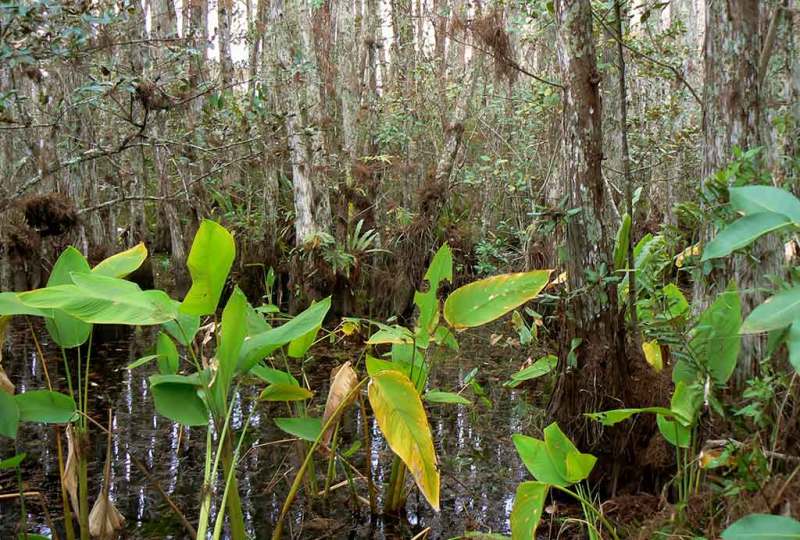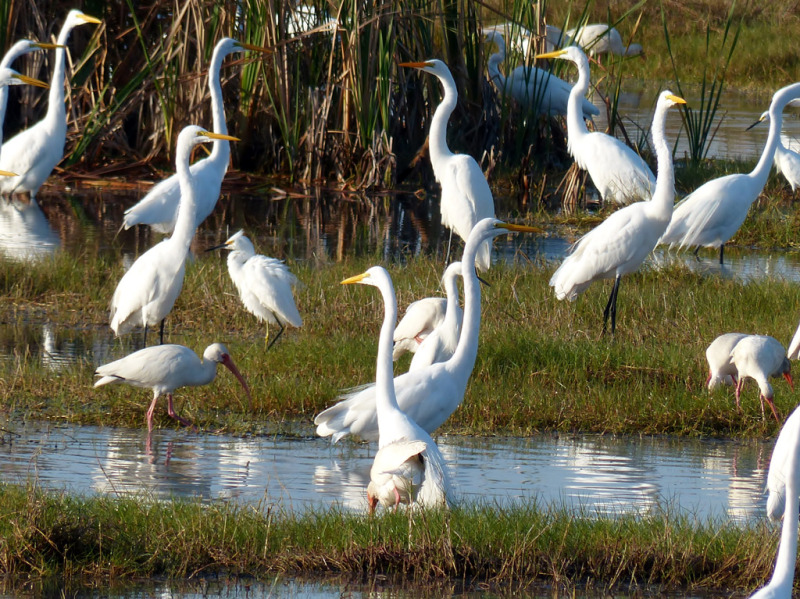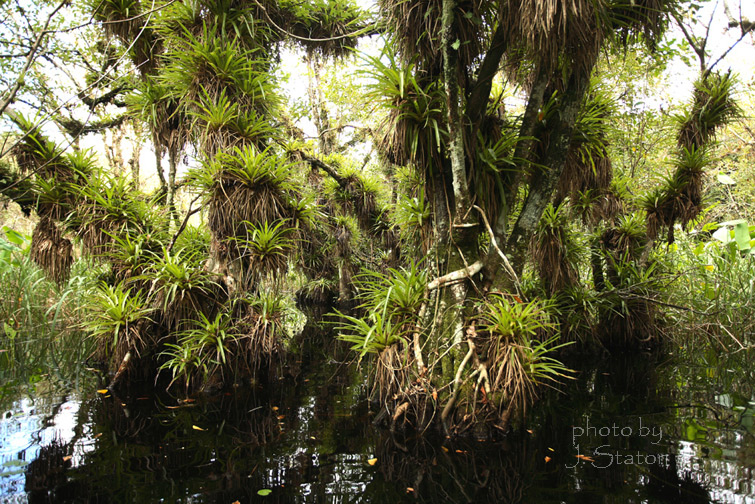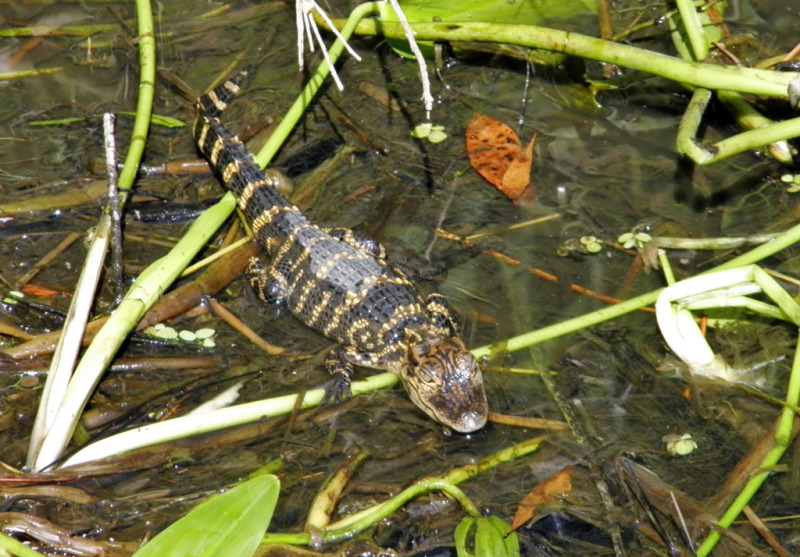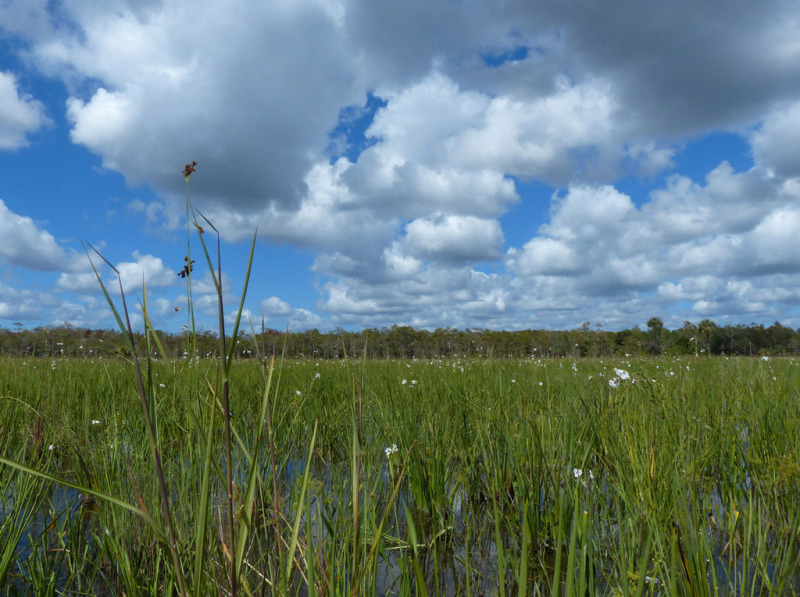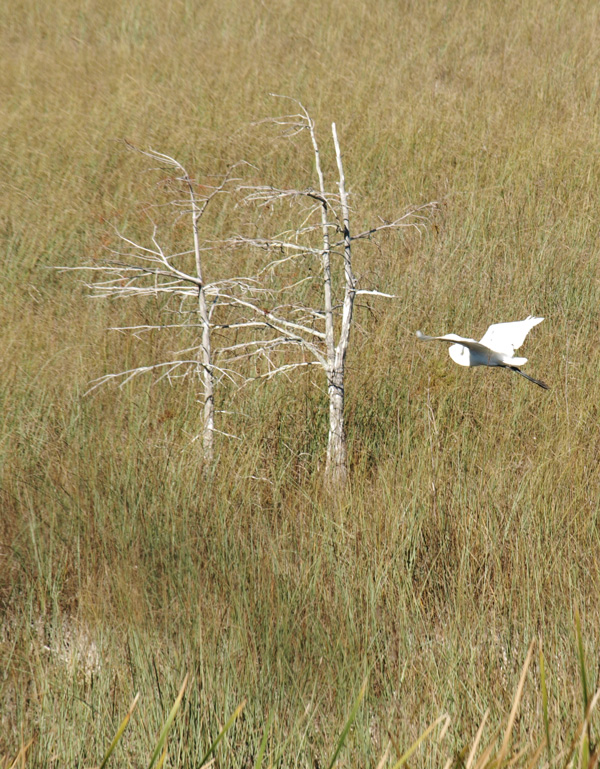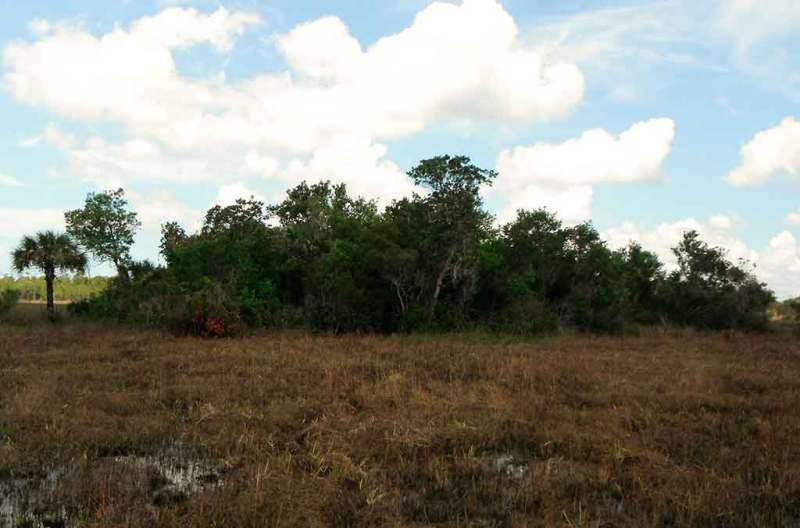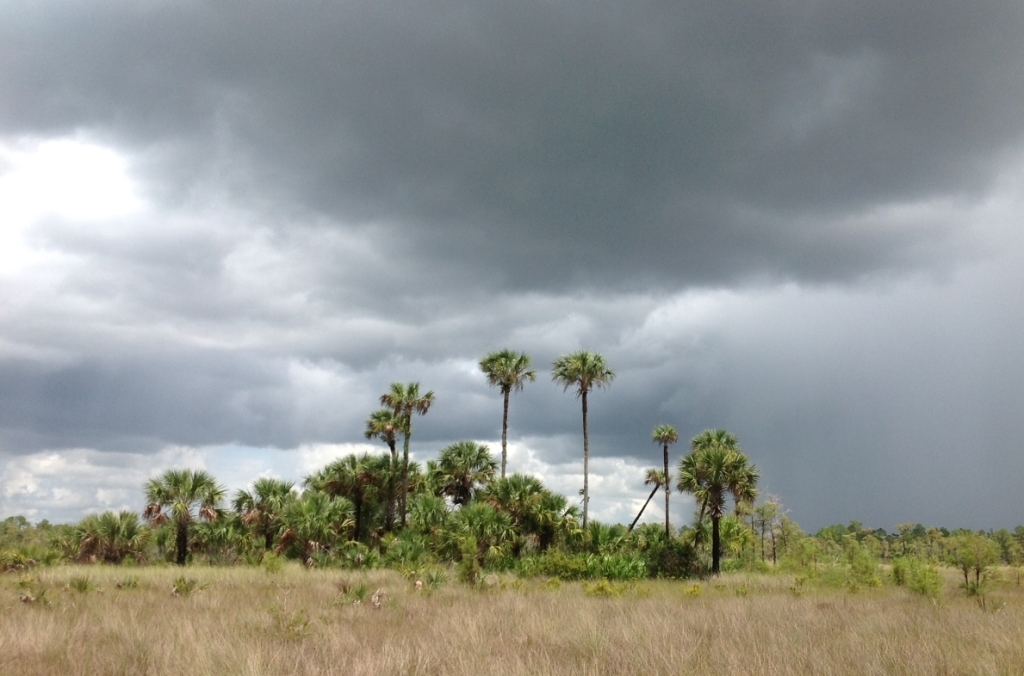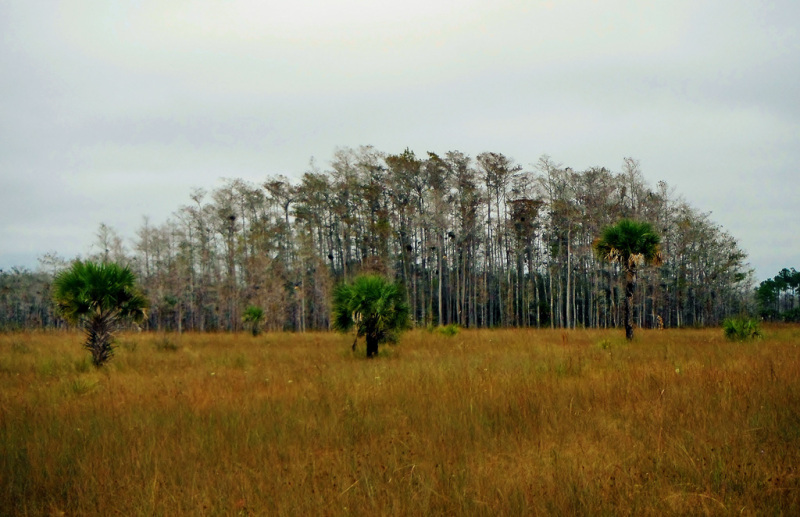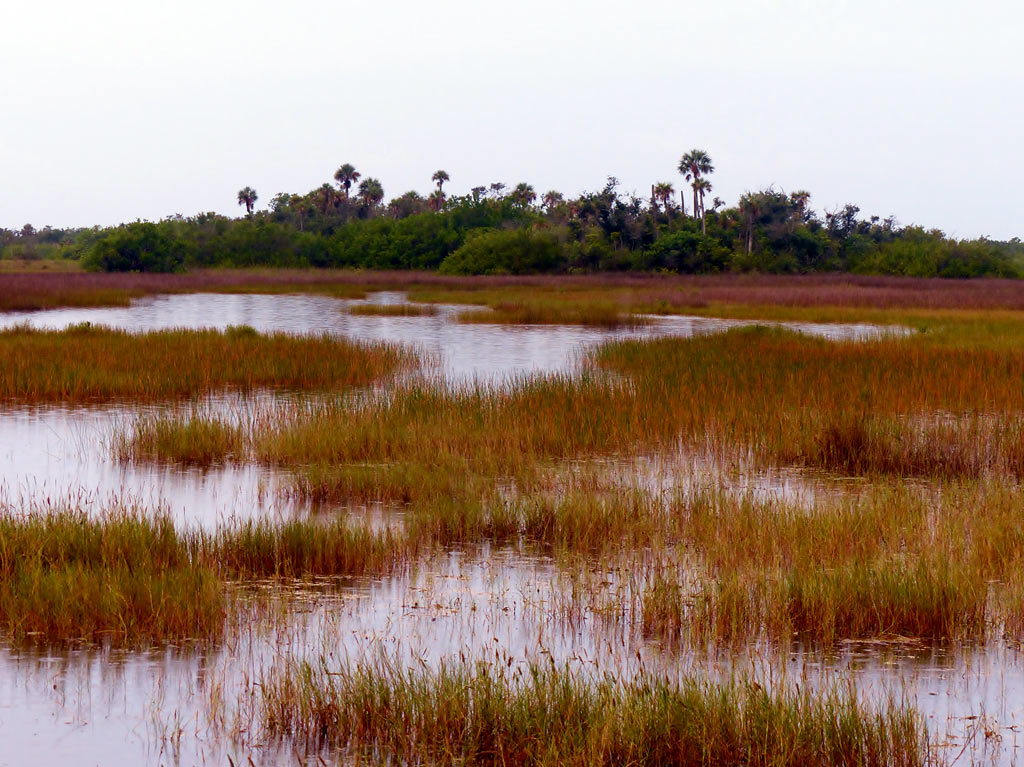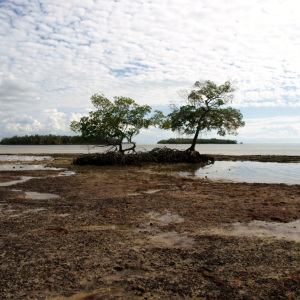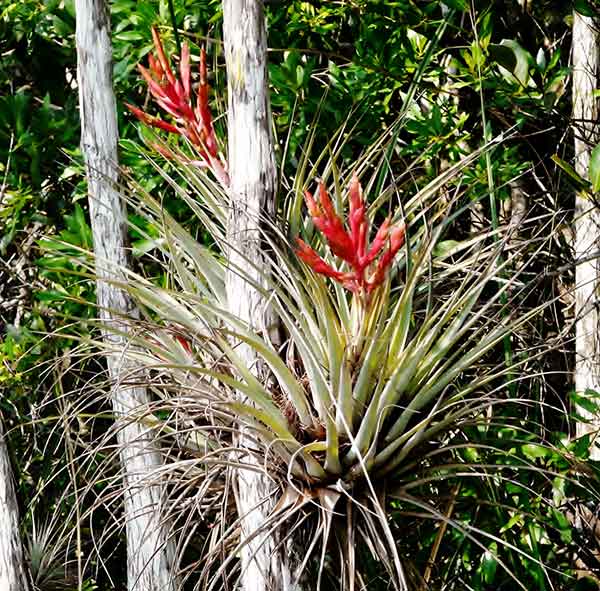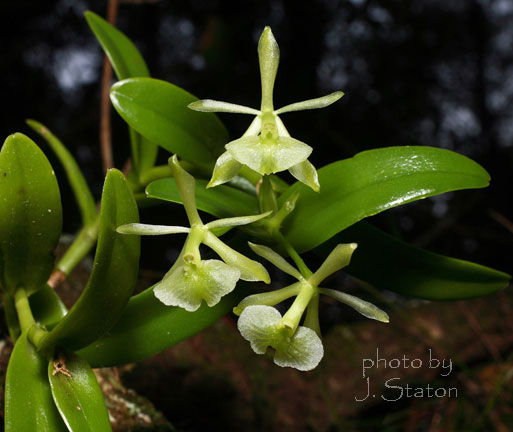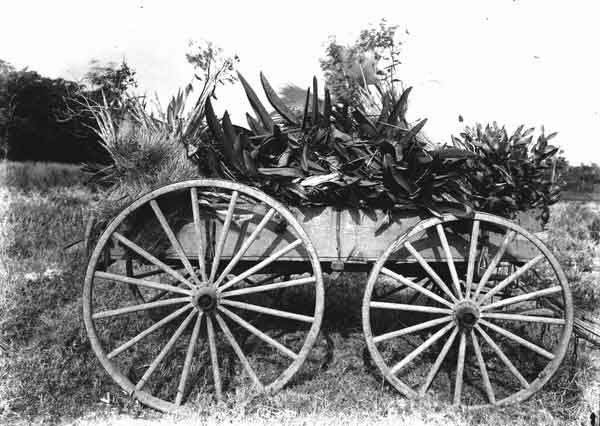Friends of Fakahatchee: Dedicated to financial and volunteer support to preserve the unique ecology and cultural heritage of Fakahatchee Strand Preserve State Park and educate the public about its importance.
Fakahatchee Strand is one of the most biologically rich places in the greater Everglades.
Periodic fires and seasonal fluctuations in water levels work hand-in-hand with the underlying geology, soil depth, and climate to fashion the mosaic of habitats and plant communities in the Fakahatchee, which has even greater biodiversity than Everglades National Park.
Some visitors are confused by the term swamp and the marsh, especially as they have different connotations in Europe than in North American. South Florida has over 15 different categories of wetlands. Marshes are characterized by shallow standing water for most of the year and low emergent vegetation with only occasional trees. Swamps on the other hand are basically forested wetlands. Both titles are frequently associated with the name of their dominant vegetation, such as Cypress or Pop Ash swamp or Cattail marsh or Flag marsh.
Another useful term is hydroperiod which is simply the amount of time water covers a plant community, the length of which often determines what plant species are present.When we look at the cypress swamp in the Fakahatchee today most of the trees are relatively young as logging only stopped some 50 odd years ago and the ancient 700 year old giants are gone. The other big difference is what were understory species in the swamp in the pre-logging days have come to dominate large sections of the swamp today where the cypress trees have not yet returned to supremacy. These include former understorey species include red maple and pop ash.
Other trees include stately royal palms, cabbage palms, pop ash, and pond apple. Pickerelweed and alligator flag grow in swamp along the margins bordering the Boardwalk, at the end of which is an alligator hole where visitors will frequently spot wading birds as well as alligators. Along the way there is an active bald eagle nest. Visitors will frequently see pileated woodpeckers, barred owls, butterflies, anoles and various water snakes. Another feature of the Park are sloughs (pronounced slew) which can be thought of as bayous. They are sluggish bodies of water which can be likened to a slow moving shallow, heavily vegetated stream or river with a long hydroperiod, although after a major rain they can be temporarily fast moving. They are major conduits for water movement throughout Florida’s wetlands. Several of these transect Janes Scenic Drive and during the wet season are what make driving the road so difficult.
Fire is also a natural part of this landscape, and the Park maintains an extensive prescribed burn program to maintain it. Without fire, woody plants and trees would invade the grassland. After a burn new growth begins to appear almost overnight. It is sweeter and more nutritious than the old growth and attracts white-tailed deer and, marsh rabbits, and those that prey on them.
Many hammocks are dominated by oak trees. These play a key role in the Park’s ecosystem as their acorns are most abundant on the ground from October through December when the nutritional value of the prairies’ grasses and other plant species are at their very lowest. The acorns are an important food source for white-tailed deer, which in turn are the favorite prey species of the Florida panther. They are also an important food for the Florida black bear, as well as wild turkey, gray and fox squirrels, mice, voles, rabbits, raccoons, opossums and foxes. Hammocks in the Park’s southern region and in closer proximity to coast tend to have a higher ratio of tropical to temperate tree species. Although hammocks are perched on higher they are sometimes flooded too, which is particularly important to many of their tropical plant species as the water provides them a means of seed dispersal.
Bromeliads are almost exclusively tropical and very much new world denizens. Of the 3,400 known species, just one has made it outside our hemisphere to the west coast of Africa. About half of these are epiphytic growing on woody hosts. The rest are terrestrial like the familiar pineapple. All our Florida natives are epiphytes, and high in the canopy they add an extra dimension to our ecosystem. Unlike mistletoes none are parasitic. This epiphytic existence has advantages. It avoids the intense competition of the forest floor, especially for space and light. But growing without soil also requires some special adaptations. Bromeliad water and nutrient absorption functions have largely been taken over by their leaves and their root systems are typically small, serving mostly just to anchor them.
Bromeliads can be further categorized into atmospherics and impounders by the way this absorption takes place. Atmospherics like Spanish and ball moss (both actually bromeliads) obtain water and minerals directly from rainfall and thus can be considered true ‘air plants’. They typically have silvery gray leaves which are coated with unique structures called trichomes or leaf scales that can absorb water and the minerals dissolved in it from the air when available and minimize moisture loss when it’s not. They also help reflect light which further reduces moisture loss. Impounders on the other hand have their leaves arranged in such a manner as to trap water in a central reservoir or tank, hence their other name as ‘tank’ species. The tank also collects litter falling from the forest canopy. The water in it turns brown from the products of decay and drowned insects from which the plant extracts valuable nutrients. These tanks may form miniature ecosystems in their own right. We even have one species in the Fakahatchee that takes this one step further and is carnivorous. This is the Powdery Catopsis (Catopsis berteronia) whose leaves, as it s name implies, are coated with a chalky powder. This seems to serve two purposes. It reflects ultraviolet light, effectively making the Catopsis invisible to insects as they fly skywards, and then when they strike the leaves unable to maintain traction so they slip down into the plant’s tank. Most of our silvery-gray bromeliads have another important adaption to living in the periodic drought conditions of our dry season. They employ Crassulacean Acid Metabolism or CAM photosynthesis rather than the more common C3 pathway. In CAM the leaf stomata only open at night to take up CO2 which is then stored as malic acid and reconverted back only in the daytime when it is needed. This avoids the stomata having to open in daylight when water loss would be higher.
One of our best known bromeliads is the Cardinal Airplant or wild pine (Tillandsia fasciculata) with its dark green-gray clusters on cypress or oak trees and bright red florescence. The Tillandsia genus accounts for all of but 4 of our 16 native bromeliad species. As part of FOF’s mission to preserve the unique ecology of the Fakahatchee we train our volunteers to record and report suspicious activity and fund the installation and maintenance of a network of hidden cameras to guard against illegal plant removal.
There are 25-30,000 orchid species world-wide, which represent about 10% of all flowering plants, but they are mostly tropical. North America has a mere 200+ native orchid species, but of these about half (106) are found in and Florida. This is because Florida is in the unique position of being at the limit of the northern-most range of some southern species and the southern-most range of some northern species. Almost half again of these Florida natives (47 species) are found in the Fakahatchee. The Fakahatchee’s relative orchid richness is due in part to the truly tropical nature of its frost-free central slough. We also have a different mix. Most temperate orchid species are terrestrial but about half of the Fakahatchee’s are epiphytic, reflecting their tropical origin. This is why Fakahatchee Strand is often referred to as the orchid capital of North America, or sometimes even as the northern most island of the Caribbean. But The Fakahatchee’s orchids are not confined to solely to the depths of the interior swamp. Terrestrial species especially are found along our trams and Jane’s Scenic Drive, and scattered across our prairies. The best way to see them is to make arrangements to join one of the organized swamp walks or excursions conducted by the Friends of Fakahatchee or the Park Biologist. Orchids have extended flowering seasons in south Florida and different species flower at different times. We are often asked when is the best month to have a chance to see the greatest number of different flowering orchid species. There’s no easy answer, but November is often excellent. Orchids can be likened to the canary in the coal mine. As a group of plants, with their specialized fungal relationships and pollinators, they are so sensitively adapted to the environment that when an ecosystem becomes degraded, they are the first plants to disappear. In Florida, as in the rest of the United States, over half of our native orchid species are endangered or threatened, mostly through habit loss and poaching. Due to each species’ very specific fungal associations these poached specimens rarely survive for long away from their original locations.
As part of FOF’s mission to preserve the unique ecology of the Fakahatchee we train our volunteers to record and report suspicious activity and fund the installation and maintenance of a network of hidden cameras to guard against illegal plant removal. For more on Fakahatchee’s Orchids Link to Fakahatchee’s Orchids page

